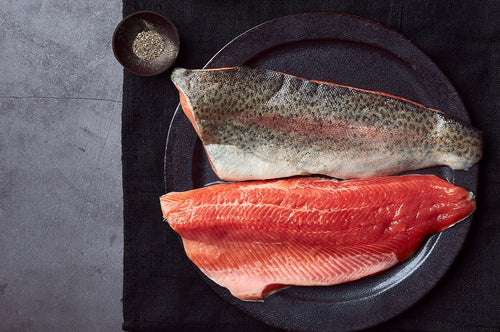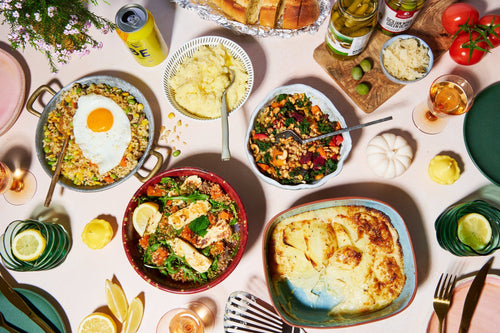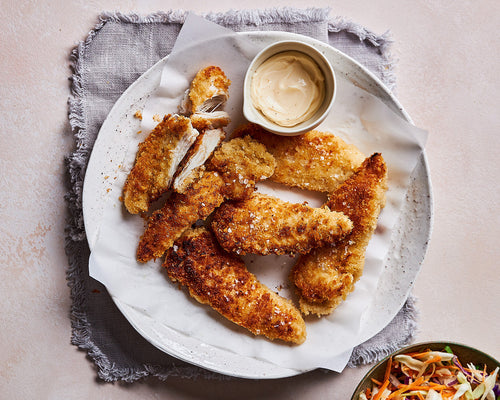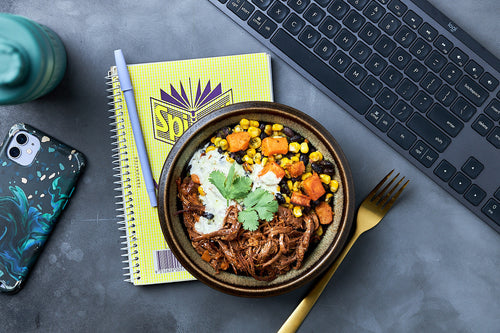Spring is most definitely in the air and the new season’s fruit and vegetables are appearing, or will be doing over the next few weeks.
We know the importance of getting five a day into our diet. And now we know the importance of food miles too, so we’re trying to buy food that’s produced locally, rather than shipped in from overseas. That means checking labels at the supermarket or greengrocer, or visiting the local farmers’ market. Or maybe even planting a vegie bed yourself.
At Dinner Ladies, as you know, we like to use ingredients our grandmothers would’ve recognised. And that definitely includes in-season veg and fruit. Our grandmothers were famous for making apple pie with the apple harvest, lemonade curd when the lemon tree was groaning, and pasta sauce when the tomatoes were ripe on the vine.
Spring vegetables
Artichokes. Young artichokes can be eaten whole, even raw in salads. Large artichokes are boiled (don’t use an aluminium pan or the flavour will be odd) and eaten one leaf at a time, preferably dipped in vinaigrette or hollandaise!
Asian greens (bok choy, choy sum, gai laan, wonga bok) – when you get these home, wrap them in foil and store in the vegetable crisper.
Asparagus (green, white and purple). Store these upright in a jar of water, like a bunch of flowers; they don’t need to be in the fridge, but are best eaten as quickly as possible for optimum freshness. Poach in a frying pan of simmering water and serve with butter, salt and shavings of parmesan. Or with a runny poached egg.
Avocados (fuerte, hass and sharwill). To speed up ripening, put in a brown paper bag with a banana for a couple of days, at room temperature out of the sun.
Beans (broad and green)
Broccoli
Carrots. Keep in a plastic bag in the fridge with a sheet of kitchen paper in the bag to absorb moisture. They will keep for a very long time. Change the paper occasionally.
Cauliflower
Choko
Cucumber
Garlic. If you have a glut of garlic, chop it all, mix with softened butter and then keep in the fridge for cooking with or making garlic bread. It will last this way for a couple of months.
Ginger. Store this wrapped in kitchen paper in a paper bag in the fridge. If you have lots, peel and chop it finely, put on a tray and freeze. Then tip into an airtight container. It will last in the freezer for a couple of months.
Lettuce
Onions (salad and spring). Top and tail these and keep them in a screw-top jar in the fridge. They’ll stay fresh for a long time and not taint other things in the fridge with their smell.
Peas. If you’re lucky enough to have fresh peas in the pod, when you cook them, throw a few of the empty pods into the pan too. It helps the peas keep their vibrant green colour. Actually, you don’t even need to pod fresh peas. Chuck the whole lot into the pan of water and bring to the boil. After a couple of minutes the pods will float to the top like magic!
Sweetcorn. Don’t salt the cooking water, or the kernels won’t soften as quickly. Add a bit of milk to the water instead, for soft, sweet corn.
Tomatoes
Zucchini flowers – wash gently and use on the day you buy these.
Spring fruit
Apples (Lady Williams). If you grow your own apples and have a lot to store, wrap each one separately in a page of newspaper. Store in a cool dark place.
Bananas. If these turn brown in the fruit bowl, mash 2 at a time, then freeze for when you have time to make banana bread.
Cumquat. Make into marmalade to last all year.
Grapefruit
Lemons. These will stay fresh for a long time if stored in water in a large screw-top jar. Change the water three times a week. This will look lovely in your kitchen too!
Mandarins
Oranges (blood, Seville and Valencia). If you’ve bought in bulk, or grown them yourself, squeeze the juice to freeze, or simmer the whole oranges to make Claudia Roden’s famous orange and almond cake (Mrs Google will help you find this in 2 minutes). For each cake, 2 whole oranges are simmered and then whizzed to puree in a food processor. You can do this, then freeze in batches, ready for baking.
Papaya and pawpaw
Pineapple
Tangelo
Starfruit
Strawberries. It’s hard to imagine ‘too many’ strawberries, but if you have that problem, make jam. Or strawberry ice cream. Or chop and freeze them in portions in ziplock bags for making smoothies.
















































